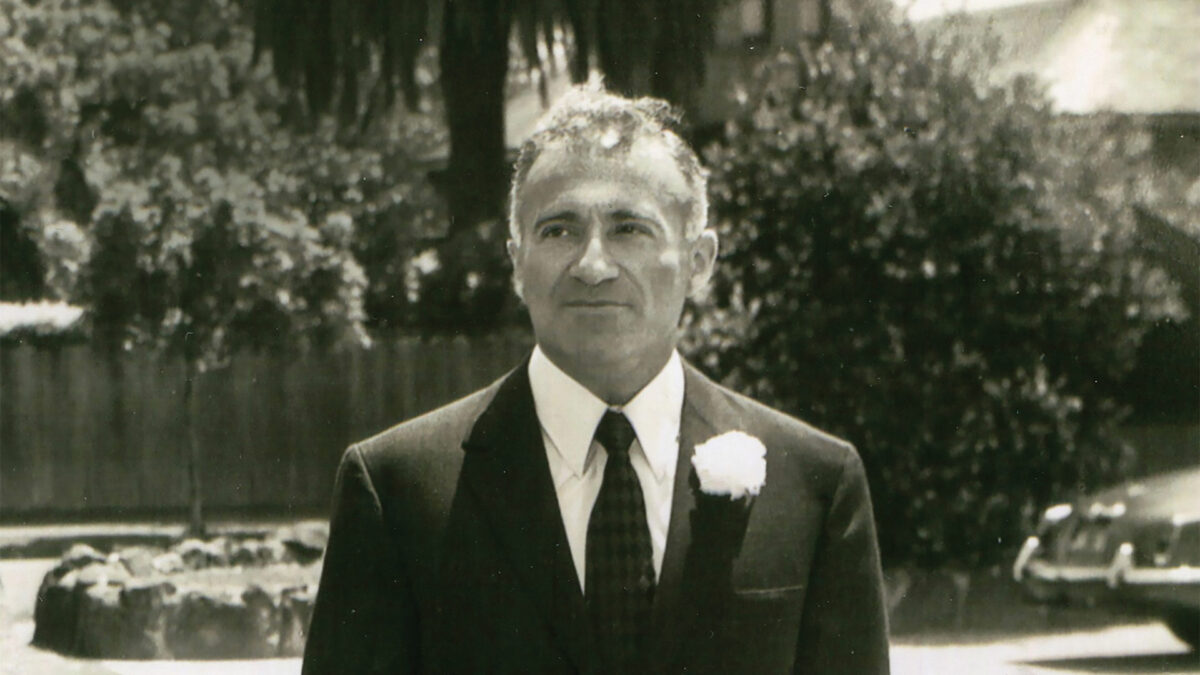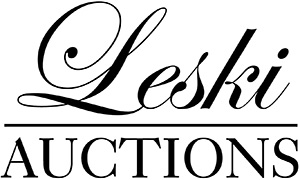
THE ESTATE OF MARTIN SACHS | Part II
A Celebration of Wine, a wonderful Whiteley and a Smart
We are pleased to bring you the second portion of the estate of the late Martin Sachs, who arrived in Melbourne from war-torn Europe in 1948. From the moment he arrived, Martin embraced Australian arts, culture, the landscape and the produce. His dinner parties at his home, surrounded by his favourite artworks and lubricated from his extensive wine cellar are, no doubt, still happy memories to those who were lucky enough to be his guests.
This auction gives us another small window on to his passions: The delightful early Jeffrey Smart oil painting, “Wooloomooloo Squash” was in his collection for decades and was one of his favourite pieces. Similarly,Brett Whiteley’s “Max Lake’s Vineyard” of 1976, also a long-time resident on Martin’s study wall, was particularly close to his heart. It is clear that Martin and Brett shared a love of the wines their friend, Max Lake was creating at his vineyard in the Hunter Valley. Martin discovered the vineyard shortly after the first vintages in the late 1960s and he appears to have had a standing order for the rest of his life.
Offered in this second selection of wines from Martin’s cellar are numerous examples of those purchases: Lot 52, comprises of three 1970 Lake’s Folly Cabernets and another bottle over-written “1971” and signed by Max Lake; Lots 79, 81 and 83 are each a dozen 1974 Lake’s Folly Cabernets: Lot 125 introduces the 1976 vintage, and so on to Lot 290, a magnum of the 1999 vintage. It has been particularly pleasing to be able to offer you hundreds of bottles of Max Lake’s wines in the same auction as the delightful drawing Whiteley created on his visit to the vineyard in 1976. The intersection of art and wine is quite joyous.
Of course, there are many other fine wines represented here including Chateau Tahbilk (Lots 10, 12 and 18), Wynns (Lots 13, 19, 25 and 28), Penfolds (Lots 14, 22, 43-45, 55), Tyrrell’s (Lots 31-36), Redmans (Lots 41, 46, 53-54), Wolf Blass (Lots 66-70, 72, 76) and those makers continue throughout the catalogue.
We look forward to helping you with your enquiries and hope to see many of you during the viewings.
Part One of this wonderful collection was offered in March of 2022. CLICK HERE to view the online catalogue including results.
Meet the late Martin Sachs. Sounds a bit strange, doesn’t it? But in the following pages of this unique catalogue you will find the character, wit and generosity of spirit that Martin brought with him to his life in Australia. A lover of art, a magnanimous host, a lover of wine and a man imbued with a quality of kindness and charity that continues to touch many lives. We hope you can experience some of his joie de vivre, as you also get to know him.
Martin Sachs was born on 9 May 1925 in Krakow, Poland. The only son of Hannah and David, he was an excellent student whose education was cut short at 14 with the onset of the war. Whilst he was originally relieved by the prospect of not having to learn Latin, that was quickly quashed as the family was forced into the Krakow Ghetto. Martin’s father was rounded up in the Ghetto and transported to Belzec death camp where he was killed in 1942. Martin and his mother were able to remain together until August 1944 when they were separated and he was sent to the Mauthausen Labour Camp. Martin’s mother was sent to Auschwitz, then transported to Stutthof concentration camp where she was killed early in 1945. Of the 5000 young boys and men sent to Mauthausen, Martin was one of 500 to survive, eventually being liberated by US forces in May 1945. He was just 20 years old.
He returned to Poland for a few years after the war, trying his hand at a range of enterprises, but after seeing no future for himself there on account of the continuing anti-Semitism he left for Australia in 1948. In Australia, his major commercial activity was as a builder and developer. Martin began with houses and remains renowned in the Beaumaris area for his innovative designs including the conversion of a chicken farm into a residential court, a project still much admired and valued by the residents of those forty homes in Bellaire Court. He then moved on to high rises in St. Kilda, most on Beaconsfield Parade, as well as office showrooms around South Melbourne. For students of architecture and building practices, Martin’s body of work remains important and influential.
Martin had many passions and never hesitated to express these through his support of them. He was a life-long supporter of Israel which found expression through his efforts on behalf of the Jewish National Fund which raised funds for land reclamation, swamp clearance, tree planting and other environmental projects. His Blue Box efforts became legendary as he persisted with them into his late 80s, despite the difficulty he already had walking. He believed strongly in the importance of giving blood, receiving recognition from the Australian Red Cross for his life long donations. He loved everything Australian, and was tremendously grateful for the opportunities and experiences he was able to enjoy in his adopted land.
He loved classical music, was a big supporter of the arts and was a passionate advocate for and consumer of Australian wines. He was a great cook and a keen chess player. He cared greatly for others, took a genuine interest in people he met, supported those in need and made sure to share that which he held to be important or loved in the world with those around him. He celebrated and supported artistic creativity and counted several artists amongst his friends. Besides housing his huge wine cellar, the home he designed and built in Montalto Avenue Toorak, with its vaulted ceilings and huge walls, provided a magnificent gallery for the many paintings, drawings and sculptures he collected.
There was no segregation between the different parts and passions in Martin’s life. He didn’t have people he only worked with – working with Martin meant being a part of his social life as well. He didn’t just cook for himself, but was renowned for his dinner parties. He didn’t donate blood alone, frequently encouraging his colleagues to come with him and to get involved. He had a unique ability to combine some of his passions in ways that not many others would, often cooking and preparing for a dinner party whilst having three games of chess going on at the same time and a glass of wine at hand.
Martin was a man who, in early life, had so much taken away from him and experienced the unspeakable horrors of the Holocaust. Although these losses and atrocities plagued him throughout his years, he overcame them to be a man who gave so much and whose true generosity of spirit found final expression in his will. A significant portion of his art collection was gifted to friends and family, and six of his closest “mates” each received a selection of vintage wines from his extensive cellar, “so they could drink to his memory and the good times they shared”.
A Fund to be established in memory of Martin’s parents and to be used for the furtherance of education and research, particularly in the science of chemistry, will ultimately benefit from Martin’s estate.
Martin Sachs passed away at the age of 95. A life well lived.
